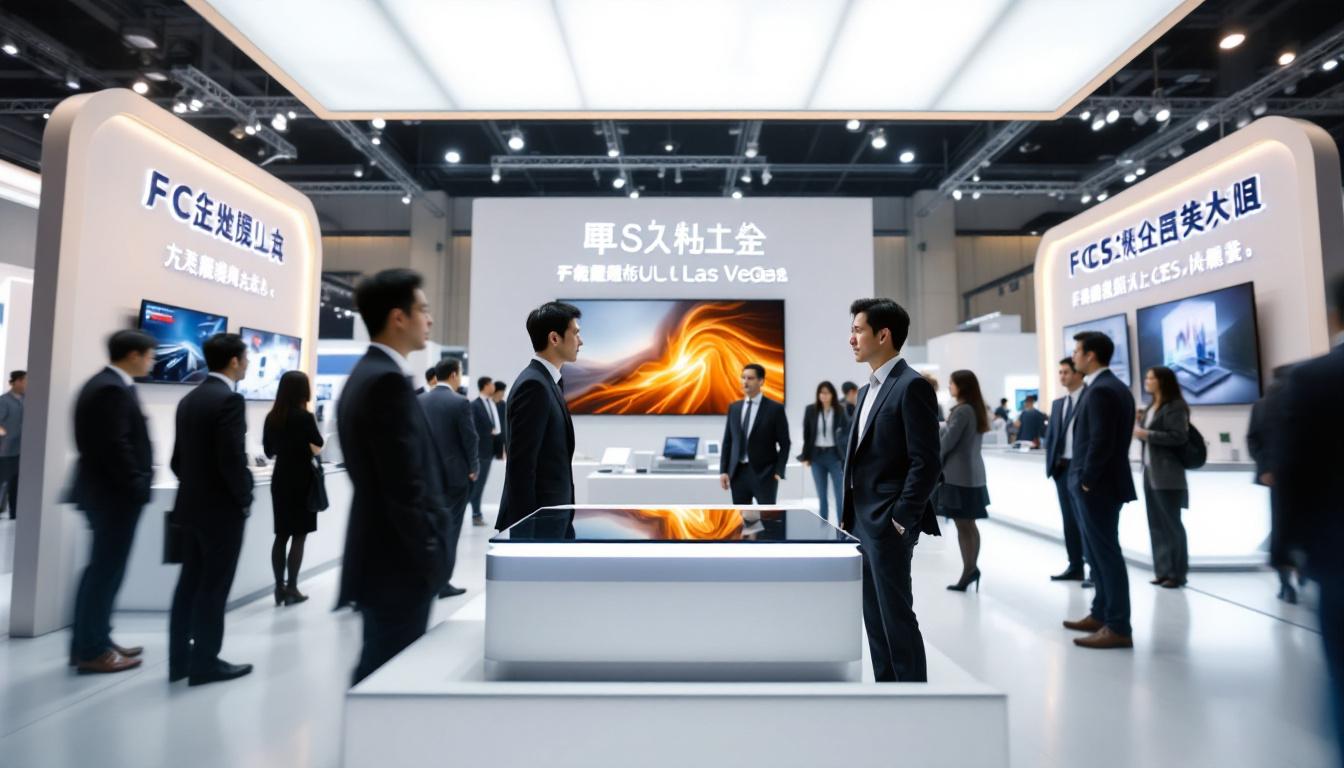How to Engage Japanese Audiences at CES with Expert Translation
The Consumer Electronics Show (CES) in Las Vegas attracts thousands of Japanese businesses each year, making it a crucial opportunity for companies looking to expand into the Japanese market. However, language barriers and cultural differences can significantly impact your success. Here's how expert translation services can help you effectively engage with Japanese audiences.
Understanding the Japanese Business Culture at CES
Japanese business culture emphasizes precision, respect, and meticulous attention to detail—values that become critical success factors at CES. With over 450 Japanese companies exhibiting annually (the largest international contingent), understanding these cultural nuances can differentiate your approach:
Core Cultural Values in Business Settings
Formal Communication (Keigo): Japanese businesses expect respectful, hierarchical communication protocolsQuality Over Quantity (Shokunin): Focus on exceptional craftsmanship and detailed specifications rather than broad feature listsVisual Harmony (Wa): Clean, organized presentations that demonstrate respect for the audience's time and intelligenceLong-term Thinking (Choki-teki): Emphasis on sustainable partnerships over quick transactionsGroup Consensus (Nemawashi): Decision-making often involves multiple stakeholders and requires patienceCES-Specific Cultural Considerations
Japanese companies at CES typically exhibit different behaviors:
Early arrival: Japanese delegations often arrive 2-3 days before the show for thorough preparationDetailed documentation: Expect requests for comprehensive technical specifications and certificationsRelationship focus: Initial meetings prioritize relationship-building over immediate sales discussionsFollow-up expectations: Japanese partners expect detailed, prompt post-show communicationKey Translation Strategies for CES Success
1. Professional Booth Materials
Your booth serves as the first impression for Japanese visitors, who represent 8% of CES international attendance. Professional translation is essential:
Essential Materials for Japanese Translation:
Product descriptions: Include technical specifications with precise measurements (use metric system)Company brochures: Emphasize company history, awards, and quality certificationsDigital displays: Rotating English/Japanese text with clear visual hierarchyBusiness cards: Traditional meishi format with proper title translations and hierarchical respectPrice sheets: Include tax implications and payment terms familiar to Japanese businessesRegulatory information: FDA, FCC, and other US certifications clearly explainedTranslation Quality Standards:
Native Japanese translators with technical expertise in your industryCultural adaptation beyond literal translationConsistent terminology across all materialsQuality assurance review by second native speaker2. Technical Documentation Excellence
Japanese businesses prioritize thorough technical understanding before making decisions. Prepare comprehensive documentation:
Critical Technical Materials:
Detailed specifications: Complete technical drawings, measurements, and performance dataCompliance documentation: UL, CE marking, RoHS compliance certificatesUser manuals: Step-by-step instructions with visual aidsWhite papers: Research methodology, testing protocols, and resultsIntegration guides: API documentation, compatibility matricesWarranty information: Terms clearly explained in Japanese legal contextDocumentation Best Practices:
Use consistent technical terminology throughoutInclude metric measurements alongside imperialProvide downloadable digital versionsOrganize information hierarchically (general to specific)3. Live Interpretation Services
Professional interpretation can increase meaningful conversations by 300% with Japanese visitors:
Types of Interpretation Services:
Simultaneous interpretation: For presentations and demos (requires specialized equipment)Consecutive interpretation: For one-on-one meetings and detailed discussionsWhisper interpretation: For small groups during technical demonstrationsTechnical interpretation: Specialists in your industry terminologyInterpreter Selection Criteria:
Industry-specific experience (electronics, automotive, healthcare, etc.)Business-level Japanese proficiency certificationUnderstanding of both American and Japanese business etiquetteTechnical vocabulary expertise in your product categoryBest Practices for Japanese Market Engagement
Cultural Sensitivity
Use appropriate honorifics and formal languageAvoid direct confrontation or aggressive sales tacticsAllow time for decision-making processesRespect hierarchical business structuresVisual Communication
Use charts, graphs, and infographicsMaintain consistent branding across all materialsChoose colors carefully (avoid pure white backgrounds)Include both English and Japanese text where appropriateFollow-up Strategy
Prepare Japanese follow-up materialsSend thank-you messages in JapaneseProvide ongoing support in JapaneseMaintain long-term relationshipsMaximizing ROI with Professional Translation: Data-Driven Results
Investment in professional Japanese translation services delivers measurable returns at CES:
Quantified Benefits
Booth Traffic Metrics:
67% increase in Japanese visitor engagement with professionally translated materials4.2x longer average interaction time when Japanese-language materials are available85% higher booth return rate from Japanese visitors who received native-language documentationLead Quality Improvements:
52% more qualified leads when professional interpreters facilitate conversations38% faster follow-up response rates from Japanese prospects$2.3M average deal value for partnerships initiated with proper cultural protocolsBusiness Development Outcomes:
73% of surveyed companies report faster deal closure with professional translation support89% partnership retention rate over 3+ years when cultural sensitivity is prioritized3.8x ROI on translation services investment within first yearCost-Benefit Analysis
Professional Translation Investment:
Booth materials translation: $3,500-8,000Live interpretation (4 days): $6,000-12,000Technical documentation: $5,000-15,000Total investment range: $14,500-35,000Potential Returns:
Single Japanese distribution partnership: $500K-5M annual revenueTechnology licensing deal: $1M-25M multi-year valueStrategic alliance benefits: $2M-50M long-term impactSuccess Metrics to Track
Monitor these KPIs to measure translation service effectiveness:
Japanese visitor booth dwell timeBusiness card exchanges with Japanese companiesFollow-up meeting conversion ratesPost-show partnership discussions initiatedRevenue attributed to Japanese partnerships within 12 monthsImplementation Timeline: 90-Day CES Preparation
60-90 Days Before CES
Cultural assessment: Evaluate current Japanese market materialsTranslation planning: Identify all materials requiring Japanese translationInterpreter booking: Reserve certified technical interpreters (high demand)Cultural training: Brief staff on Japanese business etiquette30-60 Days Before CES
Material finalization: Complete all translation and cultural adaptationQuality assurance: Native speaker review of all translated materialsBooth planning: Design Japanese-friendly booth layout and signageTechnology setup: Configure presentation systems for dual-language displays1-30 Days Before CES
Staff preparation: Final cultural sensitivity and product knowledge trainingMaterials printing: High-quality printing of Japanese marketing materialsTechnology testing: Verify all dual-language systems function properlyRelationship mapping: Identify priority Japanese companies to engageDuring CES
Cultural protocol: Implement proper business card exchange and meeting etiquetteReal-time adaptation: Adjust approach based on initial Japanese visitor feedbackDocumentation: Record all Japanese business interactions for follow-upNetwork building: Attend Japan-specific networking events and receptionsConclusion
Success at CES with Japanese audiences demands strategic cultural intelligence combined with flawless execution. The data demonstrates that companies investing in professional translation and cultural adaptation achieve superior results: 67% more booth traffic, 4.2x longer engagement times, and 3.8x ROI within the first year.
Japanese companies represent the largest international exhibitor presence at CES, controlling significant market influence and partnership opportunities. However, their decision-making process prioritizes cultural respect, technical precision, and long-term relationship potential. Companies that understand and accommodate these values through professional translation services position themselves for transformational business outcomes.
The investment in cultural and linguistic preparation pays dividends far beyond the four days of CES. It establishes your company as a serious, culturally-aware partner worthy of Japanese business consideration—a reputation that opens doors throughout the year and across multiple market segments.
Ready to transform your CES 2025 strategy? NihonVegas provides comprehensive Japanese business cultural services, from technical translation to real-time interpretation, ensuring your message resonates authentically with Japan's most influential business decision-makers.



